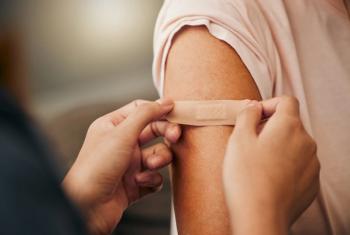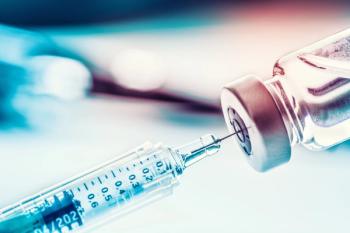
- Consultant for Pediatricians Vol 6 No 4
- Volume 6
- Issue 4
When a Parent Asks About HPV Infection...
With the introduction of Gardasil--the vaccine that protects against infection with human papillomavirus (HPV) types 6, 11, 16, and 18--pediatricians are fielding an increasing number of questions from parents about this disease. Parents want to know how prevalent HPV infection actually is and how much of an impact the vaccine will have.
What should you tell them about vaccination?
With the introduction of Gardasil--the vaccine that protects against infection with human papillomavirus (HPV) types 6, 11, 16, and 18--pediatricians are fielding an increasing number of questions from parents about this disease. Parents want to know how prevalent HPV infection actually is and how much of an impact the vaccine will have.
Recently, Dunne and colleagues1 addressed the issue of HPV prevalence in a study published in JAMA. Previous studies cited by the authors have found that HPV infection is the most common sexually transmitted disease; prevalence is highest among young sexually active persons. The authors' aim was to establish prevalence data on the specific types of HPV infection affecting women and to estimate the impact of this HPV vaccine.
Through the 2003-2004 National Health and Nutrition Examination Survey (NHANES) conducted by the CDC, the authors provided vaginal swabs for specimen self-collection to females aged 14 to 59 years. The participants were taught how to obtain the specimen, and then collected the sample on their own in the bathroom of a mobile examination center. When the swabs reached the CDC, HPV detection and typing was performed.
Of the 1921 specimens that were adequate for testing, 26.8% were positive for HPV. The rate was highest among women aged 20 to 24 years (prevalence rate of 44.8%). An increase in HPV prevalence was seen for each year from age 14 to 24 years. Of sexually active females aged 14 to 19 years and 20 to 24 years, the HPV prevalence was found to be 39.6%, and 49.3%, respectively. Overall, 15.2% of females were found to have a high-risk type of HPV. When the HPV-positive specimens were typed, the types most commonly found were not those covered by the HPV vaccine.
The authors point out that the self-collected vaginal swabs used in the study may have been more likely to pick up types of HPV that are not linked to cervical infection. Their study is also limited in that it detected only current HPV infections, not past ones. Overall exposure would be better determined with serum samples. The authors also note that their study covered data from fewer than 2000 women during only 2 years. With a larger sample and over a longer period, a different prevalence of varied HPV types may emerge.
So . . . when a parent asks you about HPV and Gardasil, what should you tell them? You can tell them that Gardasil has nearly 100% efficacy in protecting against the HPV types that are most likely to cause cervical cancer and genital warts.2 However, Gardasil does not protect against all types of HPV, many of which are commonly found in young women and teens. We need to remind our adolescent patients that when they are ready to become sexually active, they need to protect themselves against HPV and other STDs by always using condoms.
Despite the fact that there are many HPV strains in the community that are not covered by the vaccine, we can largely protect girls and women from cervical cancer by providing Gardasil and discussing its benefits with patients and their parents. *
REFERENCES:1. Dunne EF, Unger ER, Sternberg M, et al. Prevalence of HPV infection among females in the United States. JAMA. 2007;297:813-819.
2. Centers for Disease Control and Prevention. HPV vaccine questions and answers. Available at:
Articles in this issue
over 18 years ago
Boy With Rash on Hands and Feetover 18 years ago
Wheeze in Preschool Children:over 18 years ago
Case In Point: Aberrant Left Coronary Arteryover 18 years ago
Sunflower Seed Ingestionover 18 years ago
Erythema Infectiosum and Acropustulosis of Infancyover 18 years ago
Child With Bullous Lesion on Left Side of Groinover 18 years ago
Erythema Multiforme or Urticaria?over 18 years ago
Osteoid Osteoma in a Teenagerover 18 years ago
Tips on Treating MolluscumNewsletter
Access practical, evidence-based guidance to support better care for our youngest patients. Join our email list for the latest clinical updates.








